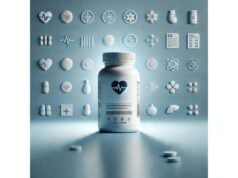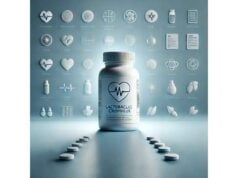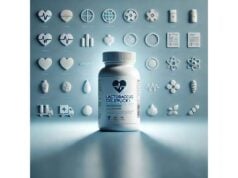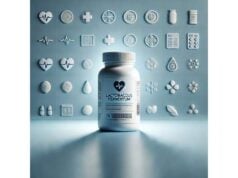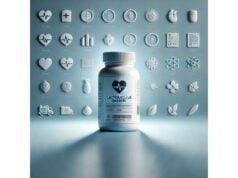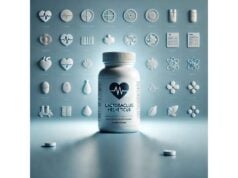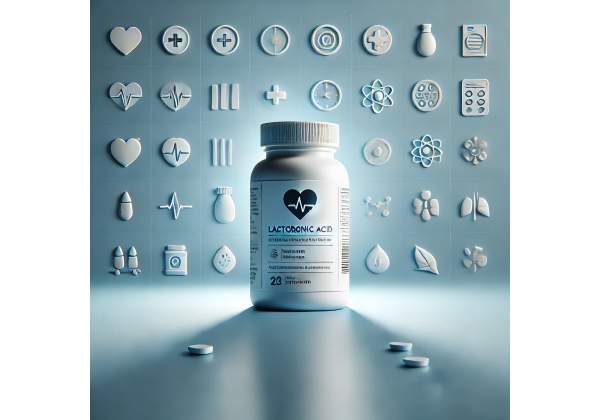
Lactobionic acid (LBA) is a next-generation polyhydroxy “bionic” acid created by linking galactose to gluconic acid. In skin care, it behaves like a gentle, water-loving exfoliant that also functions as a powerful humectant and antioxidant. Because the molecule is large and strongly binds water, it works at the skin surface to smooth texture and improve radiance with far less sting than alpha hydroxy acids (AHAs) such as glycolic acid. Formulas with LBA are often recommended for dry, reactive, or redness-prone complexions, and they pair well with barrier-supporting routines. Beyond hydration and mild resurfacing, LBA helps chelate (bind) metals and can inhibit enzymes that break down collagen, which is why it appears in many “anti-aging” moisturizers and serums. Dermatology studies also explore its role in peels for improving elasticity and visible photodamage. This guide explains how LBA works, who benefits most, how to use it without irritation, realistic expectations, safe concentration ranges, and what to avoid.
Key Insights
- Improves hydration and texture while being gentler than many AHAs.
- Typical leave-on range: 3–10% once daily or 3–5 nights per week; professional peels 20–50%.
- Use sunscreen daily; any exfoliant can increase sun sensitivity.
- Avoid if you have an active eczema or barrier flare, open wounds, or a known sensitivity to hydroxy acids.
Table of Contents
- What is lactobionic acid?
- Does it work and what are the benefits?
- How to use it in your routine
- How much and how often to apply?
- Who should avoid or be cautious?
- What the evidence says and FAQs
What is lactobionic acid?
Lactobionic acid (LBA) is a polyhydroxy acid (PHA) formed when gluconic acid is linked to galactose. You may also see it called a “bionic acid,” a subset of PHAs with extra hydroxyl groups that enhance water binding. That chemical architecture makes LBA highly hygroscopic (it attracts and holds water) and relatively bulky compared with small AHAs like glycolic acid. The size matters: larger molecules penetrate the stratum corneum more slowly and stay nearer to the surface, which translates to gentler exfoliation and better tolerability for many people with sensitive or redness-prone skin.
How it works on skin:
- Humectant hydration: Numerous hydroxyl groups latch onto water, increasing corneocyte hydration and softening the feel of skin.
- Gentle exfoliation: LBA loosens the bonds between dead surface cells, encouraging even desquamation and a smoother, brighter look.
- Antioxidant and chelating actions: By binding transition metals such as iron and copper, LBA can help reduce metal-catalyzed oxidative stress.
- Enzyme modulation: In vitro and clinical work with PHAs suggests inhibition of matrix metalloproteinases (MMPs), enzymes that degrade collagen and elastin, which may support improved firmness over time.
- Barrier friendliness: Compared with many AHAs, PHAs including LBA generally produce less stinging and maintain stratum corneum integrity better, which is helpful for reactive skin types.
Where you’ll find it:
- Leave-on products: serums, essences, moisturizers, eye creams; typical concentration 3–10%.
- Rinse-off formulas: cleansers or masks; usually 2–8% with brief contact times.
- Professional peels: 20–50% LBA used in structured protocols by trained providers to improve hydration, elasticity, and visible photodamage.
Who is it for?
- Best matches: normal to dry skin, sensitive or redness-prone skin, those who struggle with AHA sting, and people seeking mild resurfacing with barrier support.
- Also useful: early photoaging, dullness, uneven texture, dehydration, and as a transition step before stronger acids or retinoids.
Bottom line: LBA delivers surface smoothing and significant moisturization with a lower risk of irritation when used as directed, making it one of the most approachable exfoliating actives for daily routines.
Does it work and what are the benefits?
Lactobionic acid has accumulated evidence for several outcomes relevant to everyday skin concerns, especially hydration, elasticity, and gentle radiance. The strongest real-world benefits arise from how effectively LBA binds water while also promoting non-irritating exfoliation.
Hydration and barrier support. People notice LBA first because skin feels plumper and more comfortable. As a humectant, LBA increases corneocyte water content and can reduce transepidermal water loss (TEWL) when paired with emollients and occlusives. Clinical split-face protocols using LBA peels have documented higher corneometer readings (a measure of hydration) and improved elasticity across multiple treatment sessions. In leave-on routines, the day-to-day effect is softer, less flaky skin with a smoother makeup canvas.
Texture and radiance. Because LBA slowly loosens the “glue” between dead cells at the surface, it helps even out rough patches and brighten dull tone. Unlike aggressive resurfacing acids, LBA’s larger molecular size favors a more surface-focused action that avoids the sharp sting some users feel with glycolic acid. With consistent use, fine textural irregularities look more uniform, and the skin reflects light more evenly.
Fine lines and photoaging. While no cosmetic acid “erases” wrinkles, repeated use of PHAs (including LBA) is associated with visible improvements in periocular lines and signs of photodamage. Several controlled studies and reviews report increases in skin elasticity and dermal thickness changes after structured PHA use or peels. Mechanistically, antioxidant and metal-chelating activity, plus potential MMP inhibition, can help counter processes that contribute to collagen breakdown.
Redness-prone or reactive skin. PHAs are often better tolerated in conditions like rosacea-prone skin compared with strong AHAs. Users who struggle with burning or excessive dryness on glycolic acid can frequently use LBA at modest concentrations with minimal sting. That makes LBA a popular “bridge” ingredient when introducing exfoliation to a delicate barrier.
Acne-adjacent benefits. LBA is not a first-line acne treatment (salicylic acid and retinoids remain standard), but by hydrating, smoothing desquamation, and supporting barrier function, it can complement acne regimens. Some peel studies using LBA have shown decreases in oiliness and improvements in post-acne texture when integrated into broader care plans.
What to expect and when:
- Immediate (days): skin feels softer and better hydrated; makeup sits more smoothly.
- Short term (2–4 weeks): more even tone and texture; fewer dry flakes; subtle glow.
- Medium term (8–12 weeks): enhanced elasticity and fine-line smoothing with consistent use; improved tolerance to other actives due to a healthier barrier routine.
Realistic scope: LBA is a gentle multitasker, not a dramatic resurfacer. It shines when you want daily-use hydration plus mild, steady refinements without the downtime of strong acids.
How to use it in your routine
Step-by-step application (leave-on serum or moisturizer)
- Cleanse with a mild, low-foam cleanser suited to your skin type. Pat dry—skin can be slightly damp to boost humectancy.
- Apply LBA as directed: 1–2 pumps (~0.3–0.5 mL) of serum across face and neck, or a pea-sized amount of cream. Avoid eyelids and lips unless a product is specifically designed for those areas.
- Seal with a barrier-supporting moisturizer (ceramides, cholesterol, fatty acids) to reduce TEWL and lock in hydration.
- Protect every morning with a broad-spectrum SPF 30+; exfoliants can increase sun sensitivity.
- Evaluate every 2–3 weeks. If well tolerated, you can increase frequency within the safe ranges below.
Layering tips
- With retinoids: Alternate nights at first. Many can eventually tolerate LBA in the morning and retinoid at night, or LBA on “off” nights to maintain smoothness without compounding irritation.
- With vitamin C (ascorbic acid): Use at different times of day if you tend to sting easily. If your skin is resilient, you may layer LBA first, allow to absorb, then a vitamin C serum.
- With niacinamide: This is an excellent pairing. Niacinamide supports barrier lipids and helps temper potential sensitivity from exfoliants.
- With AHAs/BHAs: Doubling up can over-exfoliate. If you combine, keep total frequency conservative and monitor for dryness.
- With barrier masks or occlusives: Great after LBA at night during cold or dry seasons.
Formats to consider
- Serums (3–10%): Best balance of potency and comfort; quick to layer under sunscreen or makeup.
- Creams (3–10%): Ideal for dry or sensitive skin; humectancy plus emollients in one step.
- Toners/essences (3–8%): Thin, fast-absorbing; watch overall routine to avoid accidental over-exfoliation.
- Rinse-off masks (5–10%, 5–15 minutes): Occasional boost for texture without daily acid exposure.
- Professional peels (20–50%): Reserved for trained professionals using timed protocols; not for at-home use.
Seasonal strategy
- Winter: Lean on LBA creams and richer moisturizers; keep frequency 3–5 nights per week if you’re dryness-prone.
- Summer: Daily sunscreen is non-negotiable; consider morning LBA for humectancy and night retinoid on alternate days if tolerated.
Patch testing
Apply a small amount to the jawline or behind the ear for 3 nights before full-face use. Pause if any persistent burning, swelling, or hives occur.
How much and how often to apply?
Choosing the right concentration and schedule is the key to getting benefits without irritation. Because LBA is gentler than many AHAs, most people can use it more regularly—yet it’s still an exfoliant and should be dosed thoughtfully.
Everyday leave-on use
- Concentration: 3–10% LBA suits most leave-on serums and creams.
- Beginners/sensitive: start at 3–5%.
- Experienced/resilient skin: 6–10% if well tolerated.
- Frequency: Once daily or 3–5 nights per week, depending on your barrier and climate.
- Amount: 1–2 pumps of serum (~0.3–0.5 mL) or a pea-sized dollop of cream to face; double for face + neck.
Rinse-off products
- Concentration: 2–8% in cleansers or wash-off masks.
- Contact time: 30–90 seconds for cleansers; 5–15 minutes for masks following product directions.
- Frequency: 2–3 times weekly to start.
Professional peels
- Concentration: 20–50% LBA performed by trained providers, often in 4–6 sessions spaced 7–14 days apart.
- Use case: improving hydration, elasticity, and photoaged texture; always follow clinician guidance.
- At-home caution: Do not attempt high-strength peels yourself; inappropriate use can damage the barrier or cause burns.
Time of day
- AM or PM works, but many prefer evening to stack with barrier creams and reduce UV interactions. If used in the morning, follow with SPF 30+.
Signs you’re overdoing it
- Tightness after cleansing that doesn’t resolve with moisturizer, prolonged stinging, shiny-but-dry look, increased redness, or flaking outside of a mask/peel window. If these appear, cut frequency in half or take an acid holiday for 7–10 days while using gentle, fragrance-free barrier care.
Special areas
- Under-eyes: Only if a product is formulated and labeled for periocular use; otherwise avoid.
- Body: LBA lotions (3–8%) can smooth dry arms or legs; start 3–4 nights per week.
Compatibility reminders
- If you already use retinoids or other acids, alternate nights to minimize cumulative irritation.
- Niacinamide (2–5%) and ceramide-rich moisturizers are excellent companions.
Who should avoid or be cautious?
While LBA is among the most tolerable exfoliating acids, it is not universally appropriate. Consider the following precautions to stay safe:
Avoid or pause LBA if:
- You have active dermatitis (eczema or psoriasis flare), open wounds, active cold sores, or a compromised barrier. Resume only after clearance.
- You recently underwent procedural dermatology (ablative lasers, deep peels, microneedling with needles that penetrate into the dermis) unless your clinician explicitly allows it.
- You have a known sensitivity to hydroxy acids or have previously experienced hives, significant swelling, or blistering with similar products.
Use with caution if:
- You’re on prescription retinoids, isotretinoin, or strong acne therapies. Many can use LBA, but start slow and alternate schedules.
- You are pregnant or breastfeeding. Topical LBA has minimal systemic absorption and is generally regarded as low risk in cosmetics; still, out of caution for any exfoliant, discuss with your healthcare provider, especially if you plan frequent use or peels.
- You have very dark skin tones and are considering professional peels. Experienced clinicians can safely perform PHA peels, but a tailored plan reduces risk of post-inflammatory hyperpigmentation.
- You have milk allergy. LBA is synthesized from lactose but does not contain milk proteins; true IgE-mediated milk protein allergy is unlikely to cross-react. However, if you’re highly sensitized or anxious about it, patch test first or choose an alternative.
Sun sensitivity and photosafety
- All exfoliants can increase photosensitivity. Use a broad-spectrum SPF 30+ daily, reapply as directed, and wear hats or seek shade.
- Introduce LBA gradually during seasons with strong sun if you’re outdoors often.
Medication and product interactions
- Combining multiple leave-on acids or scrubs can over-exfoliate; simplify if you notice persistent tightness or redness.
- Fragrances and high-alcohol toners layered over acids can amplify sting—choose fragrance-free, low-alcohol options when possible.
When to seek help
- Burning that persists beyond 20–30 minutes, hives, blistering, or worsening swelling warrants stopping use and contacting a healthcare provider.
Takeaway: LBA’s safety profile is favorable, but smart dosing, sun protection, and attention to your barrier keep the experience comfortable and effective.
What the evidence says and FAQs
Clinical snapshots
- Hydration, elasticity, and TEWL: Split-face trials using 20% LBA peels over multiple sessions have shown statistically significant improvements in corneometer hydration, cutometer elasticity, and favorable trends in TEWL, with the combination of microdermabrasion + LBA yielding the strongest hydration gains.
- Moisturizing and antioxidant profile: Reviews emphasize LBA’s ability to bind large amounts of water, chelate metals, and help maintain barrier integrity, which explains its good tolerability on sensitive skin.
- Photoaged skin and tolerability: Earlier dermatology literature notes PHAs—LBA among them—perform similarly to AHAs for visible photoaging endpoints with lower irritation, including in rosacea-prone or post-procedure settings.
- Age-tailored effects: Recent assessments comparing lactobionic and mandelic acid protocols suggest LBA may be particularly effective for improving hydration and elasticity metrics in women aged 50–60, while also benefiting younger cohorts.
What LBA does especially well
- Daily maintenance: Keeps texture refined and the barrier comfortable, making it a strong choice for routine use in sensitive or dry skin.
- Prep and pairing: Helps acclimate skin before introducing stronger resurfacing actives; pairs nicely with niacinamide and ceramide-rich moisturizers.
Limitations to understand
- Acne treatment: LBA supports barrier health and gentle exfoliation but is not the primary treatment for inflammatory acne. For that, consider salicylic acid or prescription retinoids, with LBA as a supportive humectant-exfoliant.
- Pigmentary disorders: Modest brightening is common, but for melasma or stubborn hyperpigmentation, combine with proven actives (e.g., azelaic acid, retinoids) under guidance to avoid irritation.
Frequently asked questions
- Does LBA thin the skin? No. Cosmetic use at leave-on levels supports a healthier stratum corneum turnover. Some controlled studies even report improved elasticity and dermal measurements over time.
- Is LBA less photosensitizing than glycolic acid? PHAs generally cause less irritation and are considered more barrier-friendly, but sunscreen is still crucial.
- Can I use it around the eyes? Only if the formula specifically indicates periocular safety. Otherwise, keep 0.5–1 cm away from the lash line.
- Can I combine with retinoids? Yes—alternate nights initially or keep LBA in the morning and retinoid at night if your skin tolerates it.
- How long until I see results? Hydration can be immediate; texture and glow often improve within 2–4 weeks, and elasticity benefits typically accrue over 8–12 weeks of consistent use.
A minimal starter routine (sensitive skin)
- AM: Cleanser → 3–5% LBA serum → moisturizer → SPF 30+.
- PM (3–4 nights/week): Cleanser → LBA serum/cream → rich moisturizer.
- PM (other nights): Cleanser → niacinamide or bland moisturizer only.
- Reassess after 3 weeks; adjust frequency up or down.
References
- Effects of lactobionic acid peel, aluminum oxide crystal microdermabrasion, and both procedures on skin hydration, elasticity, and transepidermal water loss (2019)
- Lactic and lactobionic acids as typically moisturizing compounds (2019)
- The use of polyhydroxy acids (PHAs) in photoaged skin (2004)
- Influence of Lactobionic Acid on Hydration and Elasticity Parameters in Women Aged 30-40 and 50-60 Years in Comparison to Mandelic Acid (2025)
- Effects of Cosmetic Formulations Containing Hydroxyacids on Sun-Exposed Skin: Current Applications and Future Developments (2012)
Disclaimer
This article is for educational purposes and is not a substitute for personalized medical advice, diagnosis, or treatment. Always consult a qualified healthcare professional or dermatologist about your specific skin concerns, conditions, and medications before starting or changing any skin care regimen, especially if you have sensitive skin, are pregnant or breastfeeding, or plan to undergo procedures.
If you found this helpful, consider sharing it on Facebook, X (formerly Twitter), or your favorite platform, and follow us for more evidence-based guides. Your support helps us continue producing quality content.

